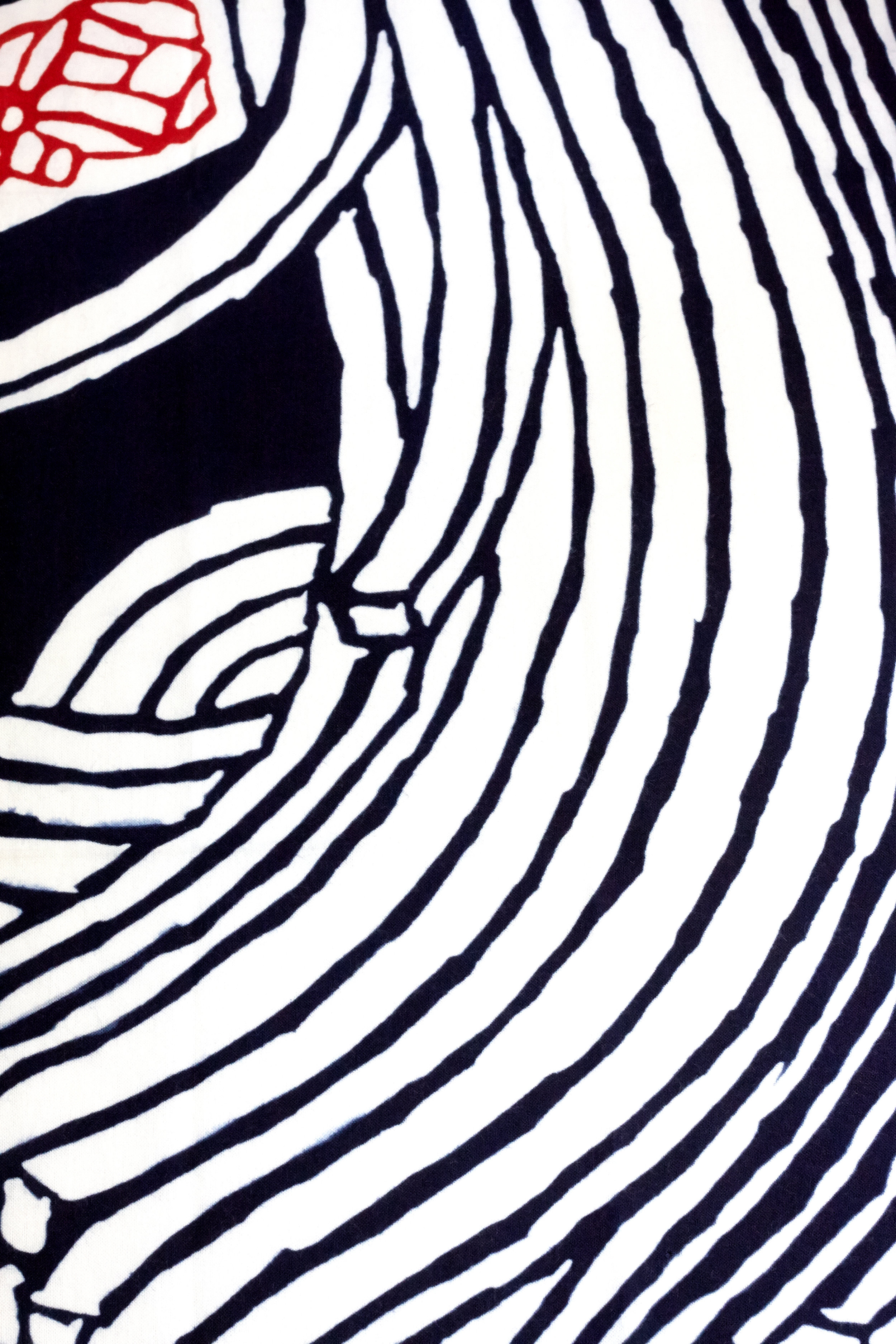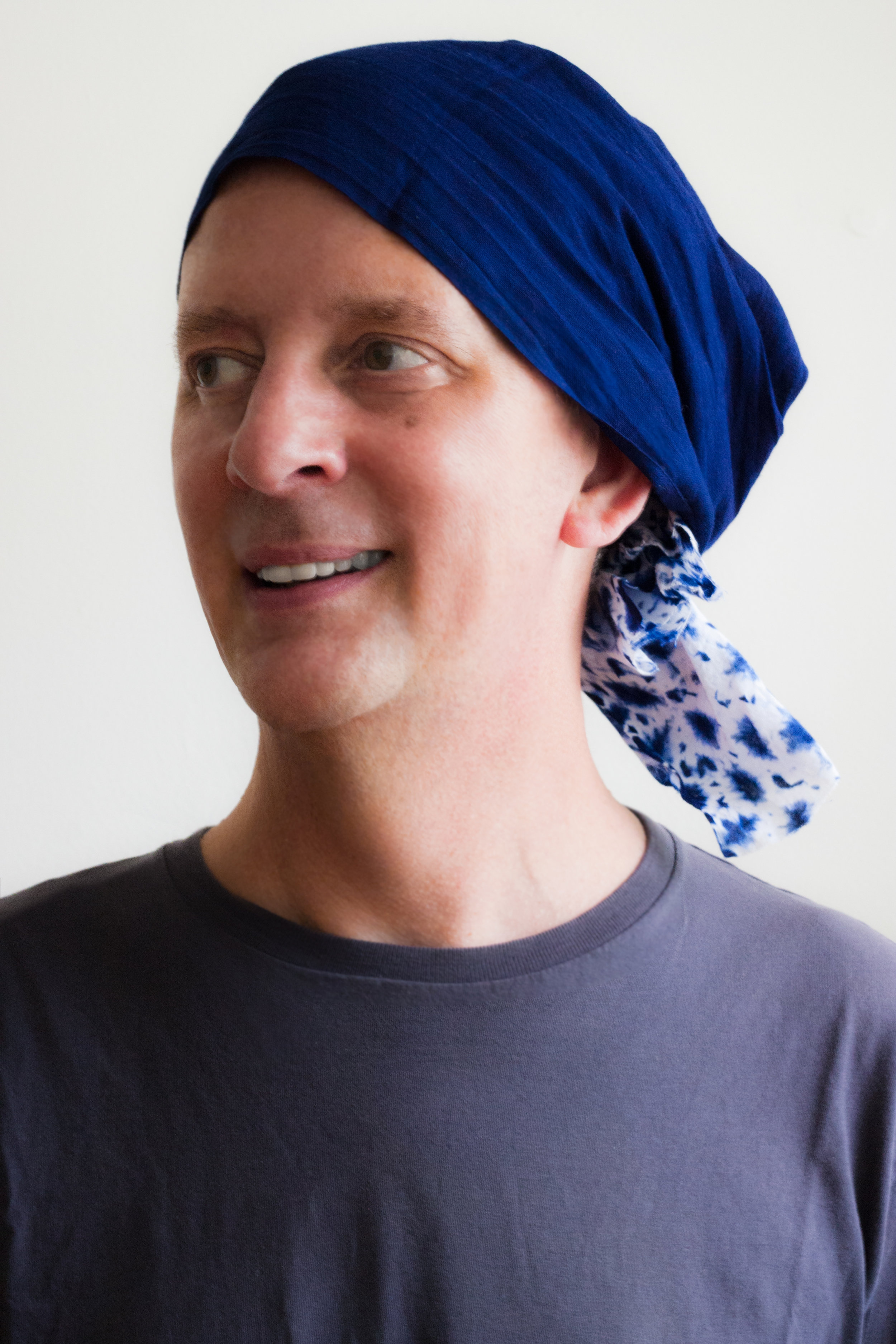Tenugui : Tokoroten Press by Mitsuko Ogura
That glistening microcosm as gelatinous tokoroten undulates from the press into a bowl. Tokoroten is a jelly extracted from seaweeds by boiling and then pressed into a noodle shape with a firm texture.
Size: apprx. 14” x 38”
Material: 100% Cotton
Method: Chusen Dye
$20 OS11
Material and production in Japan
Color and size can be slightly different from the image
It is recommended to hand-wash in cold water at the beginning of use
Product care
心太突き お椀ににゅるっとところてん、そこはきらきら光る小宇宙。
素材:綿100%
サイズ:およそ36cm×96cm
染め:注染(ちゅうせん)
手作りのため、色及びさし色の一部は若干変わる場合がございますのでご了承ください。注染は、洗い始めの数回は色が出ますのでご注意ください。
That glistening microcosm as gelatinous tokoroten undulates from the press into a bowl. Tokoroten is a jelly extracted from seaweeds by boiling and then pressed into a noodle shape with a firm texture.
Size: apprx. 14” x 38”
Material: 100% Cotton
Method: Chusen Dye
$20 OS11
Material and production in Japan
Color and size can be slightly different from the image
It is recommended to hand-wash in cold water at the beginning of use
Product care
心太突き お椀ににゅるっとところてん、そこはきらきら光る小宇宙。
素材:綿100%
サイズ:およそ36cm×96cm
染め:注染(ちゅうせん)
手作りのため、色及びさし色の一部は若干変わる場合がございますのでご了承ください。注染は、洗い始めの数回は色が出ますのでご注意ください。
That glistening microcosm as gelatinous tokoroten undulates from the press into a bowl. Tokoroten is a jelly extracted from seaweeds by boiling and then pressed into a noodle shape with a firm texture.
Size: apprx. 14” x 38”
Material: 100% Cotton
Method: Chusen Dye
$20 OS11
Material and production in Japan
Color and size can be slightly different from the image
It is recommended to hand-wash in cold water at the beginning of use
Product care
心太突き お椀ににゅるっとところてん、そこはきらきら光る小宇宙。
素材:綿100%
サイズ:およそ36cm×96cm
染め:注染(ちゅうせん)
手作りのため、色及びさし色の一部は若干変わる場合がございますのでご了承ください。注染は、洗い始めの数回は色が出ますのでご注意ください。
Mitsuko Ogura Profile
Japan Suite is honored and excited to present a variety of Tenugui works by Mitsuko Ogura, a Katazome (a Japanese style of stencil dying) artist from Tokyo. A Tenugui is a traditional Japanese cotton towel, which is light and thin. We prefer to use them as scarves, head wraps, handkerchiefs, or as a wrapping cloth for a gift or to brighten up your day. They also make very nice wall hangings if you so choose.
Mitsuko Ogura is a true “Edokko”, born and raised in Edo, the former name of Tokyo. She cares about her origin, tradition and culture, and her goal is for them to be handed down from generation to generation. This is the genesis of her creations.
Though Ogura was very interested in design when she was younger, it took quite some time for her to figure out the direction she wanted to take in her career. She first studied graphic design and environmental design, particularly city design, which was a long time concern of hers in her quest to maintain the cityscape of old Tokyo.
She self-taught the Katazome printing process and explored it further at the Graduate Program of Art Research and Design at the Tokyo University. However, she truly became deeply interested in pursuing a printing career when she visited a printing factory that her childhood friend’s father was about to close down. During the booming economy, a lot of traditional handcraft shops were going out of business, but she found the exact thing she wanted to pursue there. The owner of the printing was renowned traditional dye artist Kozaburo Nishi. Ogura says “I knew he was my mentor as soon as I met him”.
After a period of time working and learning from Nishi, she established the Ogura Design & Dye Studio where she performs virtually every step of the production process from creating the original design to cutting the stencils and dyeing the fabric for kimono, yukata, tenugui hand towels, hanao straps for geta, and noren curtains.
Katazome process usually involves many artisans dividing their specific areas of expertise. Ogura, though, is not interested in working and perfecting just one of the processes, but would rather work on everything from the drawing to dyeing. She also mixes in other types of printing methods to create her art--and she doesn’t require a lot of room to create her art. When we visited her temporary studio (she is moving locations soon), we were surprised how small of a space she actually needs.
Ogura particularly enjoys the creative process. When asked if she would make more of a particular Soba noodle design Yukata which we were interested in, she said frankly that she cannot repeat the same process for too long because she gets tired of it very quickly. That is when she starts to draw something new, creating a new design. At the end of each new project, the moment the new color comes out, is the most thrilling part of her work -- and she smiles.
She loves things from the Edo era -- Its design, color, creativity, art and culture that flourished in this peaceful period of Japanese history. A lot of visual and performing arts, both new and old, were cultivated around that time. Ogura learned a lot about Rakugo (Japanese style stand-up comedy – where the performer is always sitting) and various types of theater from her chatty mentor Nishi-san everyday when she went to work. She wonders where those silly, crazy story ideas and images came from and she loves their cool, witty sophistication. She absorbs vast amounts of references and motifs from the Edo period to create her own work, reflecting these times and stories. The outcome is new and fresh, which is essential for an Edo Katazome artist.
We invite you to enjoy Ogura-san’s cool graphics, inspired by life in the Edo period!
Contact Japan Suite if you have any questions about the artist or the images shown here.




